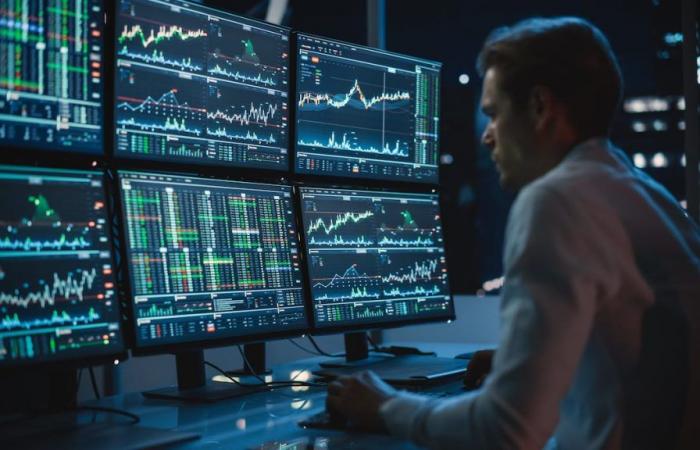In the end the experts have capitulated. Seen from the outside, it had the air of a siege. It has not been the longest—the siege of Ceuta lasted more than thirty years, mind you—but it has been two and a half intense years. Inside the castle were the analysts. Since the beginning of 2022, they have repeated incessantly that a recession was about to arrive. Outside the walls, harassing them, the macroeconomic indicators, telling a different, more optimistic story, in which there is no recession and everything is going well. Honestly, if the gambling houses had allowed bets then on what was going to happen, every sensible gambler would have bet on the recession.
This is what common sense dictated. After the pandemic, we printed and injected the largest amount of money in history, supply chains broke, inflation skyrocketed, and we had to undertake—late, in the case of Europe—the most aggressive rate hike of all time. In 9 out of 10 scenarios that would have triggered defaults, slowed credit, and triggered unemployment. A textbook recession. That is why Bloomberg’s sophisticated model for estimating recessions assigned a 100% probability at the end of 2022 that the US would enter a recession in the next 12 months. It didn’t happen. In fact, the recovery in employment has been extraordinary. Never before has unemployment been so low in the United States and Europe. And, against all odds, it seems stable.
So, in the end even the most reluctant experts have given up. The last nail in the coffin was the surrender of Mike Wilson, Morgan Stanley’s head of stock market strategy and one of the most prestigious “bears”—those with a more pessimistic view of the market—in the world. Wilson had been repeating for years that the economic situation was unsustainable and that equities would fall, soon, along with the economy. But at the end of May he changed his mind, moving his prediction from a 15% drop through 2024 to an increase—from the very high levels we are at.
And now that?
Despite the change in tone, the recommendations have not changed much. Bonds remain the preferred asset of gurus because interest rates are supposed to fall. Right now, a couple of cuts are expected in the US and Europe in the remainder of the year, and three or four additional ones in 2025. If that materializes, investors who have bonds today would put the coupon yield in their pockets and, In addition—if they sell within a year—an extra that can be juicy, especially if they are long-term bonds. The problem is that no one has a convincing answer to the questions: “Isn’t that the same thing you told me in January?”; “Could it happen again?” It is not the central scenario, but it could be that unemployment remains low, inflation a little high and that convinces the central banks that why change if I am happy like that.
It should also be a good period for the stock market, boosted by the combination of low rates, falling inflation and still solid growth. Here the concern comes from the price side. Equities have not stopped rising despite the reluctance of experts and those who enter now have to pay high prices. American stocks have an expected price-earnings ratio—the forward P/E—of 21 multiples. That is, a company that generates three dollars of profit for each share is sold in the market for about 63 dollars. That’s expensive. If those $3 come from one of the big technology companies, the stock is paying $90 today. That’s even more expensive.
The solution is across the pond. European companies sell at only 13 multiples. That is, accessing the same three dollars of benefit costs $39—a 40% discount compared to the $63 you would have paid in the United States. That discount is what makes the European stock market highly recommended for the second half of the year. anus. Furthermore, Europe may be a continent that is growing little, aging and has a war on its doorstep, but many of the profits of MSCI Europe companies come from the US (25%) and emerging markets (30%).
Investing in the Old Continent is a cheap way to buy access to a wide variety of markets. Regarding the sectors, the favorites are now a strange mix that captures well the unorthodox of the moment we live in: traditional defensive sectors (pharma), bets on the budding technological revolution (semiconductors, software) and others that have to do with the decline in trust between nations (defense or aerospace).
“That the last doomsayer gives up seems to me more of a sign of alarm than of relaxation”
Bonds and the Stock Market also have an ace up their sleeve. In Spain, for example, since the beginning of the rate increases, more than 30 billion euros have entered ultra-conservative funds, normally very short-term fixed income funds—those in “money markets”—and in baskets of bonds with a fixed term. which are called target or guaranteed return funds. Very safe products that for the first time in a long time have given attractive returns. In this time, its volume has tripled and represents almost 50,000 million euros, 15% of all the money invested in the country. When rates start to fall they will lose appeal and many investors will go out looking for higher returns, and there will be the stock and bond managers waiting for them with a brochure and a smile.
It’s not all smiles. Let us remember that the year continues to be full of geopolitical risk. If Trump wins the American elections in November, there could be changes in the conflicts in Ukraine, Gaza, Iran or the China Sea. Any of them could mean kicking the game board. Therefore, alternative assets such as gold or oil still make sense as protection in any portfolio. There are always reasons to diversify risk.
In my opinion the other big risk on the table is complacency. History teaches us that absolute consensus—positive or negative—often precedes changes in tone in the markets. As much as doomsayers are often wrong, the fact that the last of them gives up for me is more a sign of alarm than relaxation.
Francisco Quintana is director of investment strategy at ING
Follow all the information Five days in Facebook, x and Linkedinor in our newsletter Five Day Agenda
Newsletters
Sign up to receive exclusive economic information and the financial news most relevant to you
Sign up!






